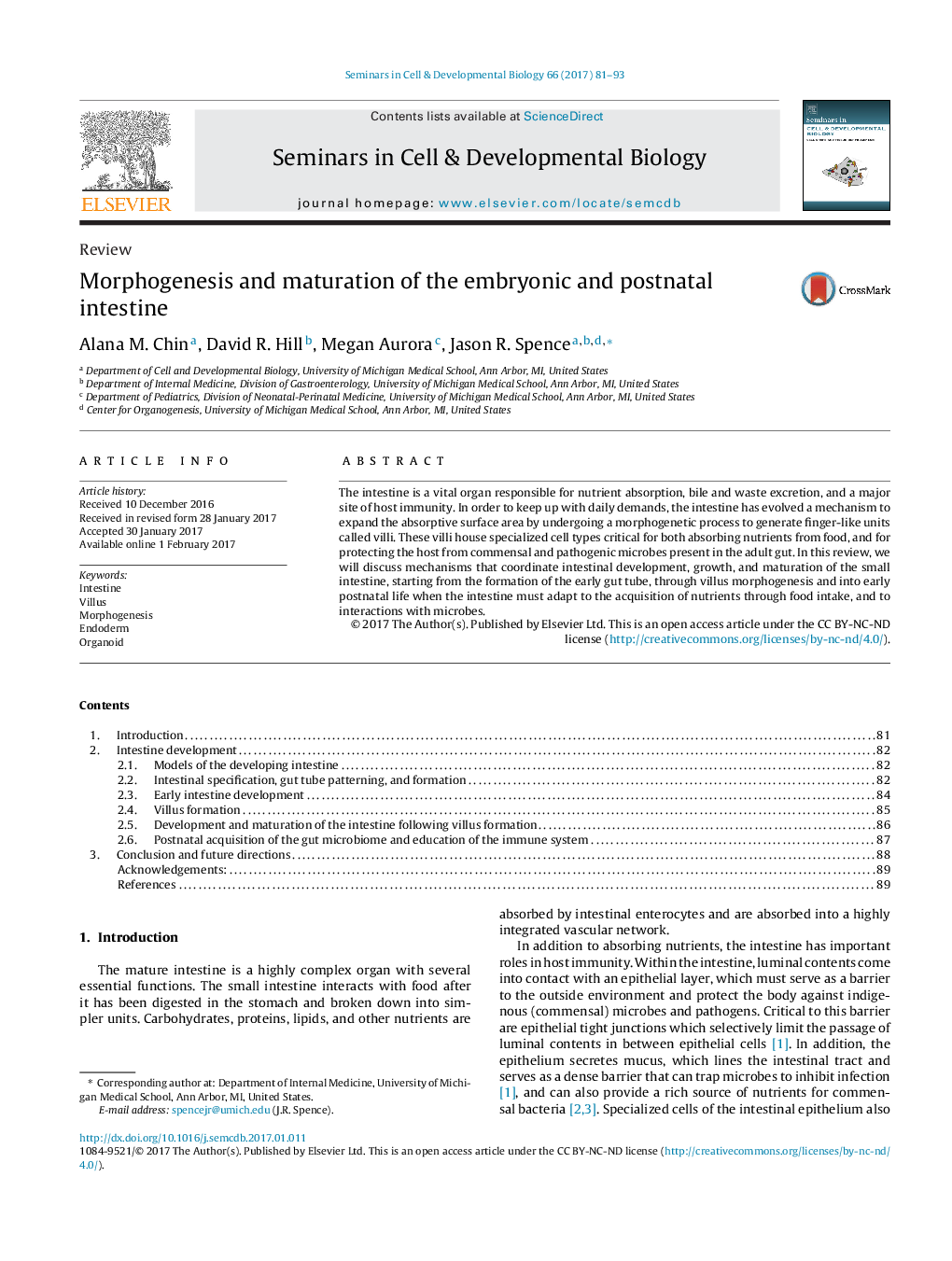| Article ID | Journal | Published Year | Pages | File Type |
|---|---|---|---|---|
| 5534884 | Seminars in Cell & Developmental Biology | 2017 | 13 Pages |
The intestine is a vital organ responsible for nutrient absorption, bile and waste excretion, and a major site of host immunity. In order to keep up with daily demands, the intestine has evolved a mechanism to expand the absorptive surface area by undergoing a morphogenetic process to generate finger-like units called villi. These villi house specialized cell types critical for both absorbing nutrients from food, and for protecting the host from commensal and pathogenic microbes present in the adult gut. In this review, we will discuss mechanisms that coordinate intestinal development, growth, and maturation of the small intestine, starting from the formation of the early gut tube, through villus morphogenesis and into early postnatal life when the intestine must adapt to the acquisition of nutrients through food intake, and to interactions with microbes.
